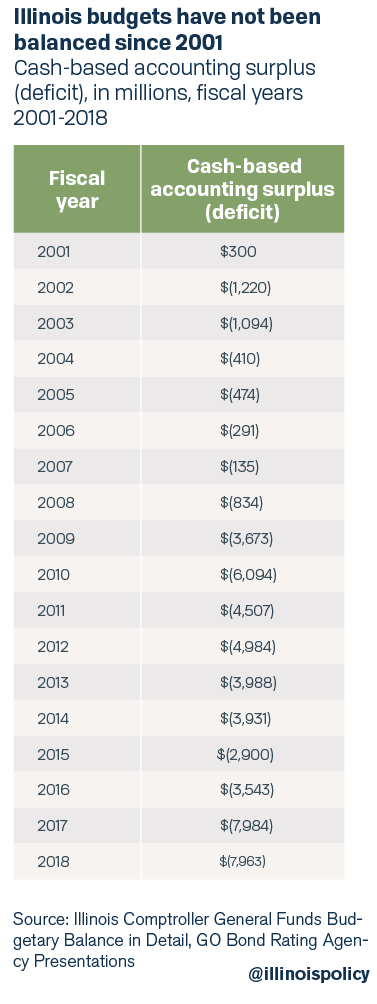Pritzker’s first year deficit $440 million larger than expected because he plans to spend $440 million more
Illinois Gov. J.B. Pritzker has said his first year deficit is $3.2 billion, but he intends to spend hundreds of millions more than planned under previous baseline budgeting.
In a document dubbed the “Rauner Wreckage Report,” Illinois Gov. J.B. Pritzker’s administration details the poor fiscal condition of the state while placing the blame squarely on his predecessor, former Illinois Gov. Bruce Rauner. In the document, the administration claims that the structural budget deficit for fiscal year 2020 is $3.2 billion, roughly $440 million more than projected by the Governor’s Office of Management and Budget, or GOMB, last November.
However, details in the document show the $440 million of increased deficit is entirely due to Pritzker’s plans to spend more than his predecessor. In other words, it’s not an unexpected “structural deficit” – the gap between baseline revenues and baseline expenditures – but rather a conscious choice to increase spending.
It is true that Illinois’ fiscal health deteriorated as a result of a 736-day budget impasse between Rauner, a Republican, and the Illinois General Assembly, controlled by Democrats led by Speaker of the House Michael Madigan. The state’s bill backlog peaked at nearly $16.8 billion during the impasse and social service agencies around the state struggled to stay afloat without state grant money.
However, Illinois’ budgetary problems go back much farther than four years. The state’s $133 billion pension debt is the result of overpromising benefits for decades and a long history of deferring payments. Meanwhile, the state budget has not been balanced since 2001. It’s not surprising that Illinois was already home to the lowest credit rating of any state as far back as 2010.

The Pritzker administration’s report, attributed to Deputy Gov. Dan Hynes, spends most of its 11 pages detailing how bad Illinois’ fiscal situation really is and how poorly the state is providing core government services.
However, on page 11 of the report Hynes reveals the reason for the gap between GOMB’s previous $2.765 billion deficit projection and the new administration’s $3.2 billion estimate. Pritzker’s administration considers Rauner’s previous baseline projections to be inadequate and plans to spend at least:
- $70 million more on higher education
- $275 million more on social services
- $30 million more on public safety
- $65 million more on government services
- $170 million more on government worker health insurance, but $170 million less on Medicaid for a net zero change
In other words, Pritzker’s larger deficit is a not a result of an unexpected drop in revenues or another unforeseen change, but rather a deliberate decision to spend more than his predecessor.
Since taking office, Pritzker has advocated for an increase in the state’s minimum wage to $15 an hour, expected to add $1.1 billion annually in state payroll costs when fully implemented, and has handed out as much as $100 million in automatic raises to some of the nation’s highest paid state government workers.
Continuing to spend more without regard for consequences for the state budget, and taxpayers, is a recipe for disaster.
Instead, Pritzker should look to structurally reform Illinois’ spending to address the largest cost drivers of the state’s fiscal problems: government worker compensation and pension benefits. The Illinois Policy Institute shows how necessary, commonsense reforms can be achieved in its recently released Budget Solutions 2020: A 5-year plan to balance Illinois’ budget, pay off debt and cut taxes.
Lawmakers have two options ahead of them: They can continue to rack up debt and pursue tax hikes that will further damage the state’s economy, or they can break with past practice and pursue responsible budgeting that protects both taxpayers and core government services.
It’s past time to end the state’s failed status quo.